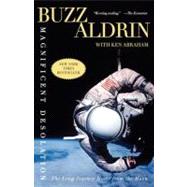
| A Journey for All Mankind | p. 1 |
| Magnificent Desolation | p. 25 |
| Homeward Bound | p. 43 |
| After the Moon, What Next? | p. 59 |
| Realignment | p. 81 |
| Flying High, Flying Low | p. 88 |
| Duty and Dilemma | p. 113 |
| Human Side of Hero | p. 123 |
| A Controlled Alcoholic | p. 142 |
| Turning Point | p. 165 |
| Reawakening | p. 174 |
| Finding the Love of My Life | p. 185 |
| The Lois Factor | p. 193 |
| New Beginnings | p. 203 |
| Every Superman Needs His Lois | p. 218 |
| Oh, the Places You Will Go! | p. 232 |
| Advocacy for America | p. 244 |
| Pop Goes Space Culture | p. 256 |
| Good-bye Blues, Hello Space Views | p. 266 |
| A Blow Heard 'Round the World | p. 281 |
| Weightless Again | p. 294 |
| Final Frontiers | p. 303 |
| Epilogue | p. 313 |
| A Note About ShareSpace | p. 321 |
| Acknowledgments | p. 323 |
| Index | p. 325 |
| Table of Contents provided by Ingram. All Rights Reserved. |
The New copy of this book will include any supplemental materials advertised. Please check the title of the book to determine if it should include any access cards, study guides, lab manuals, CDs, etc.
The Used, Rental and eBook copies of this book are not guaranteed to include any supplemental materials. Typically, only the book itself is included. This is true even if the title states it includes any access cards, study guides, lab manuals, CDs, etc.
Excerpted from Magnificent Desolation: The Long Journey Home from the Moon by Ken Abraham, Buzz Aldrin
All rights reserved by the original copyright owners. Excerpts are provided for display purposes only and may not be reproduced, reprinted or distributed without the written permission of the publisher.